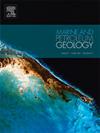Reservoir quality drivers in the Oligo-Miocene Asmari Formation, Dezful Embayment, Iran: Facies, diagenesis, and tectonic controls
IF 3.7
2区 地球科学
Q1 GEOSCIENCES, MULTIDISCIPLINARY
引用次数: 0
Abstract
The Oligo-Miocene Asmari Formation in the Shadegan Oil Field, located in the Dezful Embayment in southwestern Iran, is renowned for its complex geological characteristics in the Middle East. This study systematically investigates the drivers of reservoir quality, emphasizing the interplay between geological settings, depositional environments and facies, diagenetic processes, and tectonic activities that shape porosity and permeability. Based on the sedimentary architecture and analysis of the facies associations this formation contains a diverse assemblage of carbonate and siliciclastic lithofacies (twenty-six carbonate microfacies and six siliciclastic facies association), revealing a mixed depositional system influenced by siliciclastic influx, climatic and sea-level fluctuations, and tectonic movements. Extensive core and petrophysical data analysis were utilized to identify hydraulic flow units (HFUs) and optimize reservoir zonation using advanced analytical techniques, including machine learning algorithms. Four hydraulic flow units (HFUs) were determined and evaluated against lithology and petrophysical values: baffle unit (HFU1), normal unit (HFU2), permeable unit (HFU3), and high permeable unit (HFU4).
Key findings underscore the critical role of fractures in enhancing reservoir productivity, significantly impacting hydrocarbon recovery rates. Additionally, the analysis of diagenetic processes such as dolomitization, cementation, and dissolution reveals their dual impact—either enhancing or degrading reservoir quality. The study concludes that effective reservoir characterization depends on integrated methodologies, which combine traditional geological assessments with modern data processing techniques. This approach enhances exploration and production strategies in complex carbonate reservoirs. Ultimately, this research offers new insights into a comprehensive framework for understanding the drivers of reservoir quality in the Asmari Formation and their implications for hydrocarbon development.
求助全文
约1分钟内获得全文
求助全文
来源期刊

Marine and Petroleum Geology
地学-地球科学综合
CiteScore
8.80
自引率
14.30%
发文量
475
审稿时长
63 days
期刊介绍:
Marine and Petroleum Geology is the pre-eminent international forum for the exchange of multidisciplinary concepts, interpretations and techniques for all concerned with marine and petroleum geology in industry, government and academia. Rapid bimonthly publication allows early communications of papers or short communications to the geoscience community.
Marine and Petroleum Geology is essential reading for geologists, geophysicists and explorationists in industry, government and academia working in the following areas: marine geology; basin analysis and evaluation; organic geochemistry; reserve/resource estimation; seismic stratigraphy; thermal models of basic evolution; sedimentary geology; continental margins; geophysical interpretation; structural geology/tectonics; formation evaluation techniques; well logging.
 求助内容:
求助内容: 应助结果提醒方式:
应助结果提醒方式:


